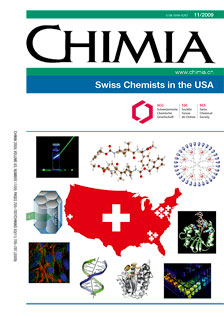The Transformation and Storage of Solar Energy: Progress Towards Visible-Light Induced Water Splitting
DOI:
https://doi.org/10.2533/chimia.2009.709Keywords:
Electron transfer, Hydrogen, Ir(iii) photosensitizers, Photocatalysis, Water splittingAbstract
The sun is a plentiful source of clean, renewable power, and the direct conversion of solar to chemical energy is a desirable goal. The collective efforts of the Bernhard group to develop molecular catalytic systems for visible-light water splitting are reviewed. Combinatorial synthesis and high-throughput screening techniques enabled the development of a series of photosensitizers with a wide range of photophysical and electrochemical properties. Parallel evaluation of the iridium(III) photosensitizers in photocatalytic water reduction systems utilizing cobalt-, platinum-, or rhodium-based water reduction catalysts resulted in systems that exhibited more than 5000 turnovers with quantum yields of 34% and turnover frequencies of 500 hr?1. For the complementary water oxidation system, the catalysts based on cyclometallated iridium complexes are robust and tunable, which allows for the rapid study of water oxidation reactions through targeted ligand modification.Downloads
Published
2009-11-27
Issue
Section
Scientific Articles
License
Copyright (c) 2009 Swiss Chemical Society

This work is licensed under a Creative Commons Attribution-NonCommercial 4.0 International License.
How to Cite
[1]
E. D. Cline, S. Bernhard, Chimia 2009, 63, 709, DOI: 10.2533/chimia.2009.709.







